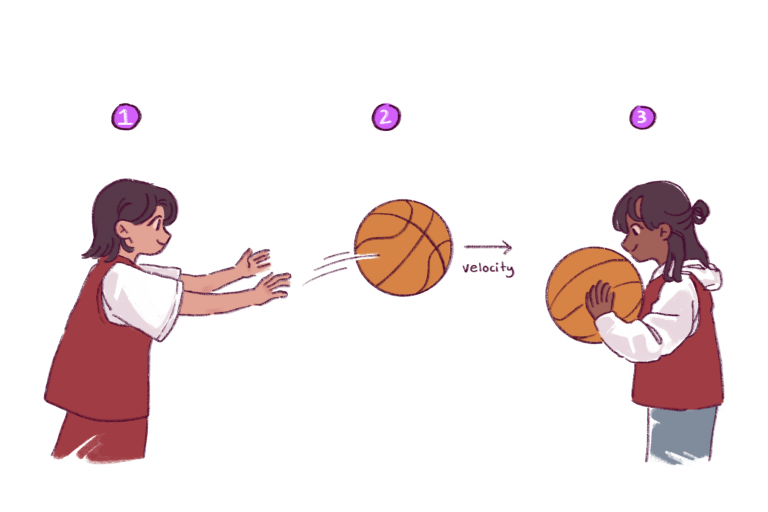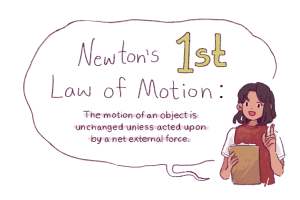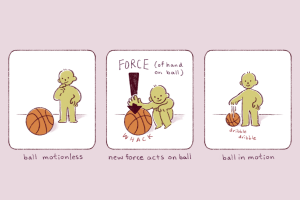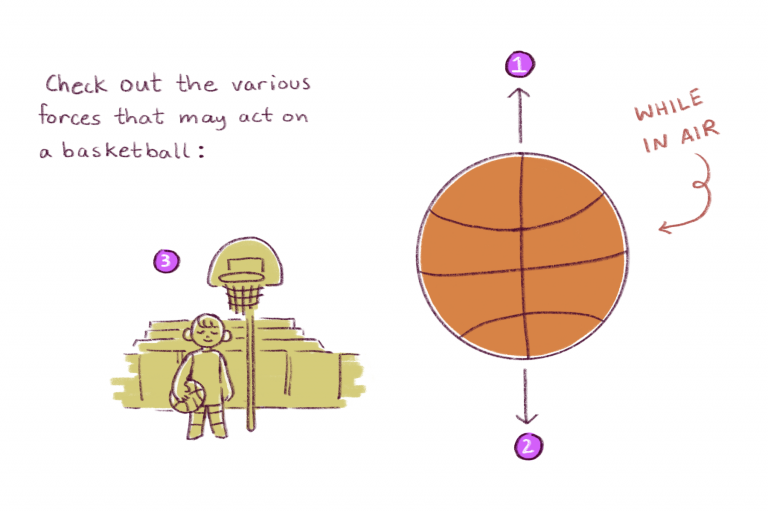Imagine yourself throwing a basketball to a teammate. Provided you throw it in the right direction with enough force, you can expect the ball to get to them without suddenly stopping, changing direction, or speeding towards them.
Let’s examine this motion below:
This is an accordion element with a series of buttons that open and close related content panels.
1.
The ball is thrown. Once in motion, the ball can be described as having a velocity, or speed in a specific direction. The standard unit of measurement for velocity is meters per second (m/s).
2.
In a world where there are no forces that can act on the ball, the ball will continue to travel at its initial velocity.
3.
However, real life is full of various forces that can change an object’s motion! Here, the ball stops when it is caught by a player; later on in this walkthrough, you’ll learn about other forces that can act on objects.

In everyday life, you probably have developed expectations for how the objects around you act. Still chairs don’t suddenly fall over, hockey pucks don’t stop in the middle of a pass, and balls thrown in one direction won’t swerve to another. It is important for the objects around us to behave consistently, otherwise it would be much more difficult to complete basic tasks! This observation is explained in Newton’s 1st law of motion:

Newton’s 1st law of motion: The motion of an object is unchanged unless acted upon by a net external force.

In the above image, a ball sits on the floor, motionless. It will not move until an external force acts upon it—start dribbling, or applying force, and it will be put into motion. Keep in mind that for an object’s motion to be changed, the sum of all forces acting on the object much not be zero. A net force of zero means that the forces acting on the object cancel each other out (for example, when two equal forces act on the object in opposite directions).

Not all external forces are visible, though! Newton’s 1st Law also applies gravity and drag, which are forces that act on a ball in air even if nothing is in contact with it. This is why a basketball in air, even if it doesn’t come in contact with anything, will eventually fall to the ground.
Let’s go through a few common forces that can act on a basketball:
This is an accordion element with a series of buttons that open and close related content panels.
1. Drag force
Drag (or “fluid resistance”) is a non-contact force that opposes the motion of an object moving in air (similar to friction!). In this example, the ball is falling down, so drag force is depicted going upwards, opposite to where the ball is headed. Calculation of drag changes based on the physical properties of the object and the speed at which it falls, but it is always dependent upon the object’s velocity.
2. Gravitational force
Gravitational force is a non-contact force. It is the attractive force that exists between two masses—in this case, the ball and the Earth. The force of gravity on an object on Earth is equal to its mass x 9.81 m/s^2 (the rate at which a falling object accelerates on Earth).
3. Various contact forces
Unlike non-contact forces like gravity and drag, contact forces are achieved when the relevant objects are close/touching. Examples of this are someone dribbling a ball, a player’s feet on the floor, or a ball hitting a hoop.
